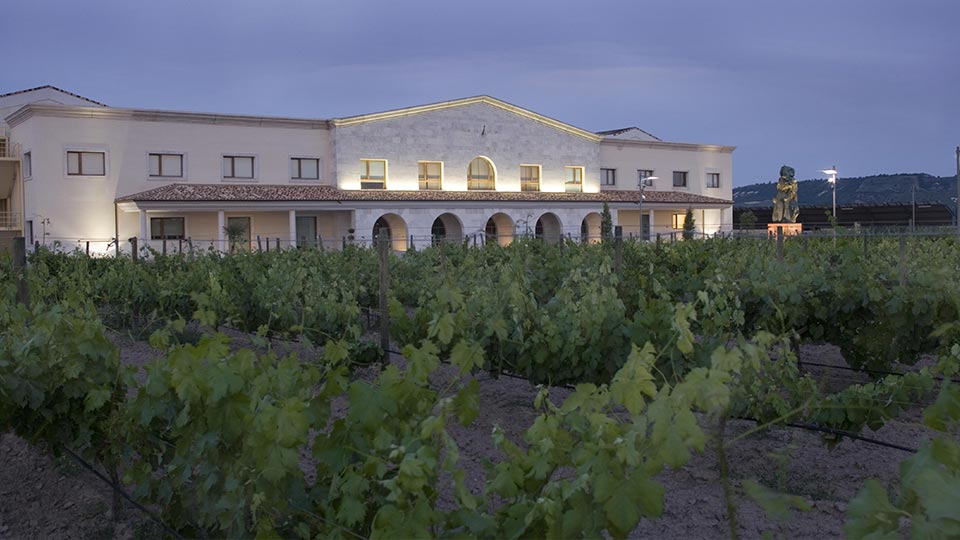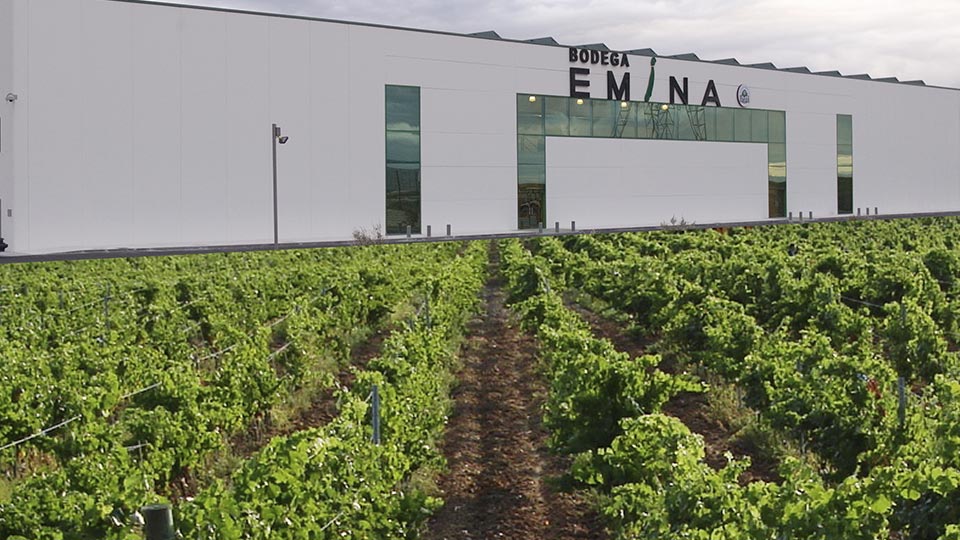Enjoy the wine processing plant at the end of this corridor on your left through the windows.
Our field technicians monitor all the activities carried out in the vineyard throughout the year and one month before the grape harvest they monitor the ripening of the grapes to decide on the optimum date for harvesting each plot. It is normally carried out at the end of September or at the beginning of October.
All harvesting is performed by hand – the bunches of grapes go to 15 kilo boxes. The Control Board verifies that the Grape is 100% Tempranillo from Ribera del Duero among other characteristics.
A first selection of whole bunches is made before passing through the de-stemmer, after that, a second selection is carried out by a machine with a laser. Then the grapes are sent to the crusher to open the fruit in order to extract the grape juice. Finally, the grape juice falls into stain-steel vats by gravity.
Before the alcoholic fermentation, tanks temperature is controlled by means of cooling jackets that surrounds the tanks (5º) so that phenolic compounds and the aromatic substances provide structure, colour and primary aromas. After 2 days, fermentation is carried out by the yeast that turns sugar into alcohol. Once the alcoholic fermentation is over, maceration process is done for a number of days depending on the wine and the vintage.
After that, the wine is bled into another tank and the skins are removed from the tank and taken to the press. It is obtained a press wine. And then the skins are used to make our spirit drinks and our cosmetics extracting the polyphenols.
It is when red wines make another fermentation called malolactic fermentation carried out by lactic bacteria. Then, all the wines make barrel ageing.
On your right, you can also see a screen showing you the energy consumption in real time. The company’s sustainability policy is outlined in the “A Sustainable Matarromera for Planet Earth” programme, which features a series of measures such as cutting energy dependence and lowering emissions, organic production and R&D&I environmental projects.
Next to this screen, you will look at a video showing the oil making process. Always carrying out sustainable practices in their production processes, using resources efficiently and saving energy. The olives used for the production of OLIDUERO olive oils come from different sources in Castilla y León, some of which are integrated into organic farming.






